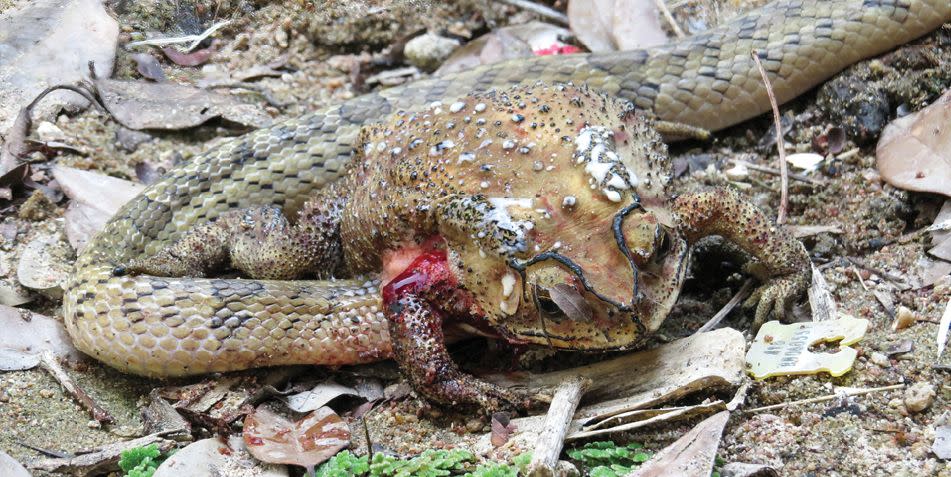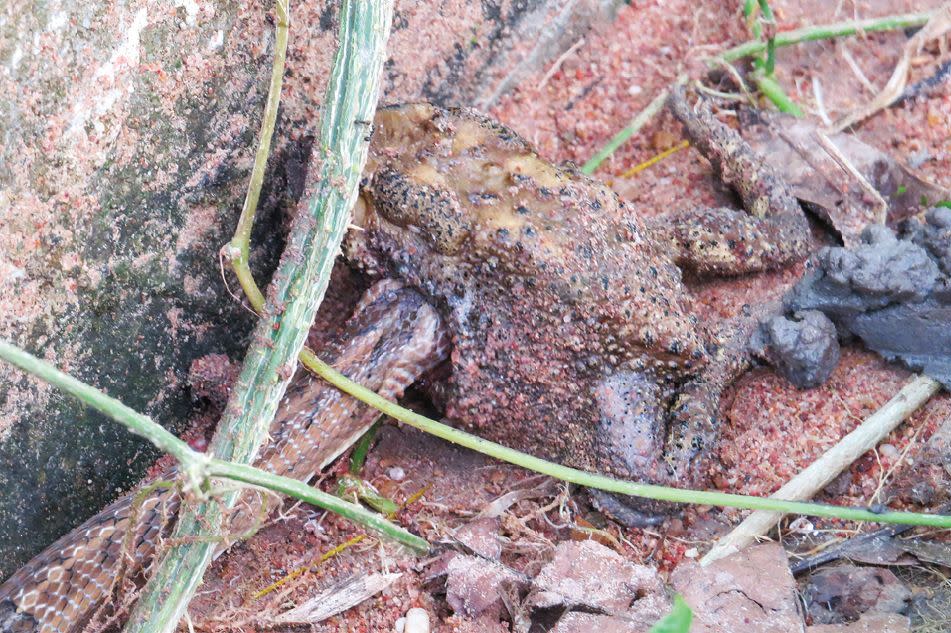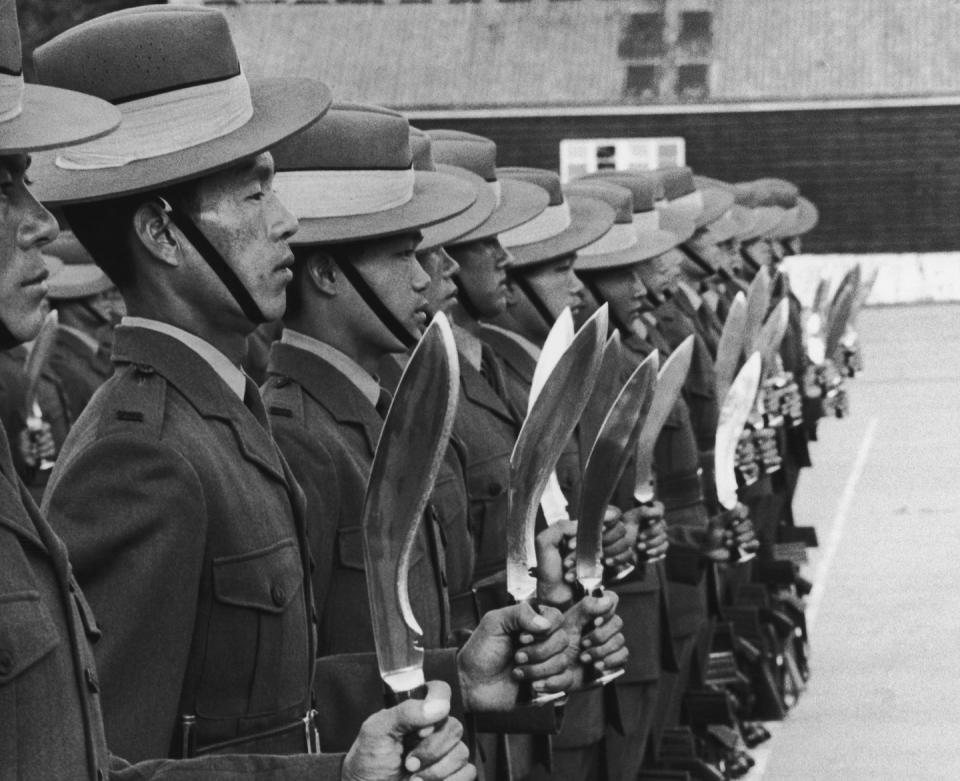These Snakes Take Their Prey Down in the Most Savage Way

Researchers have published a new paper describing the downright vicious way kukri snakes take down some of their prey—in this case, Asian black-spotted toads.
The kukri, who uses specialized teeth to create a gash in the body of the toad, destroys its prey by pulling its viscera out and consuming it creating a truly gruesome way to go.
In a straight up savage move, small-banded kukri snakes (Oligodon fasciolatus) native to Thailand have been spotted literally tearing into Asian black-spotted toads and eating their viscera while the toads are still alive.
This “unknown feeding mode” has both fascinated and horrified researchers who have witnessed the phenomenon first-hand and published their findings in the journal Herpetozoa this September. According to the paper, the researchers analyzed three separate cases in which O. fasciolatus was seen using specialized “enlarged posterior maxillary teeth to cut open the abdomen of a live poisonous toad (Duttaphrynus melanostictus) and eat its organs.”

This feeding method is incredibly peculiar because, as Gizmodo points out, snakes tend to swallow their food whole when feeding. Plus, the kukri, which grows to be just under 3-feet long, typically eats the eggs of birds and other reptiles, but have been known to eat larvae, insects, and rodents, too.
One hypothesis floating around that supports this strange and brutal feeding method is that it helps the kukri avoid ingesting toxins the toads produce when they’re in danger. In one instance, researchers observed the toad toxin in action:
“The toad was observed spraying poison like a fine mist, some of which hit the head of the snake. In addition, some fluid from the back of the toad dripped down and covered the snake’s head and eyes. The toad jumped away. The snake rubbed its head against the substrate including dead leaves to remove some poison around the eyes etc., and it retreated under a pile of logs where it remained for approx. 10 minutes before it reappeared and started searching for the toad again. It found the toad which jumped approx. 2.5 m towards the pond again, but the snake grabbed it by a hind leg. White toxic fluid appeared in the dorsal region of the toad, some of which was transferred to the eyes of the snake. Subsequently the snake retreated and rubbed and cleaned its eyes again. The toad managed to jump in the pond, but swam to a bank where it tried to hide under a log for approx. 30 minutes. During that period of time the snake hid under a nearby log trying to remove poison from its head including its mouth by rubbing the head. At the same time it opened the mouth and moved the jaws in different positions repeatedly.”
The researchers say that the the snakes and toads “fought vigorously,” which caused the toads to secrete the white toxin from their backs and necks. The toxin can prove lethal to predators and even has the ability to cause illness and death in humans. After fighting, “the snakes inserted their heads into the abdomen of the toads, pulled out some of the organs and swallowed them,” add the researchers.
Kukri snakes were named after the kukri knife, which features a curved blade and is used by Nepalese Gurkha soldiers because of their enlarged teeth used for mortally wounding prey. Instead of forming puncture wounds, the kukri snake uses its sharp teeth to create lacerations that may cause “profuse, long-lasting bleeding.”
🐍 You love awesome animals. So do we. Let's nerd out over them together.

Not only does this incapacitate a kukri’s prey, but it also creates an opening that the kukri uses to enter the toad’s body and consume from the inside. Interestingly, the kukri’s only fed on the internal toad organs, leaving their disfigured corpses behind.
You Might Also Like


